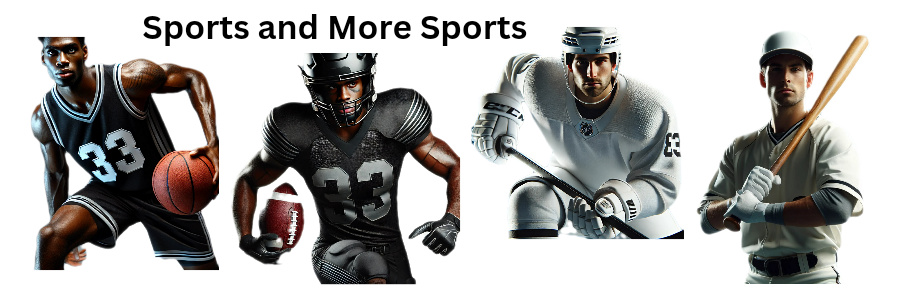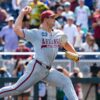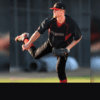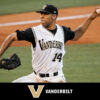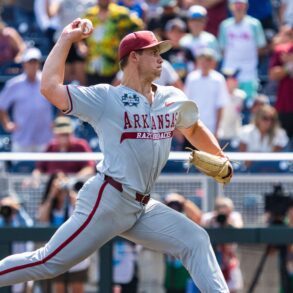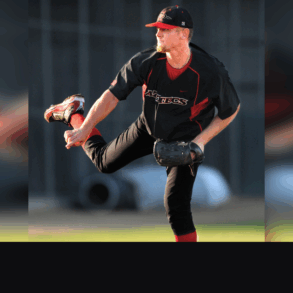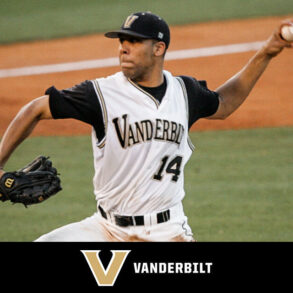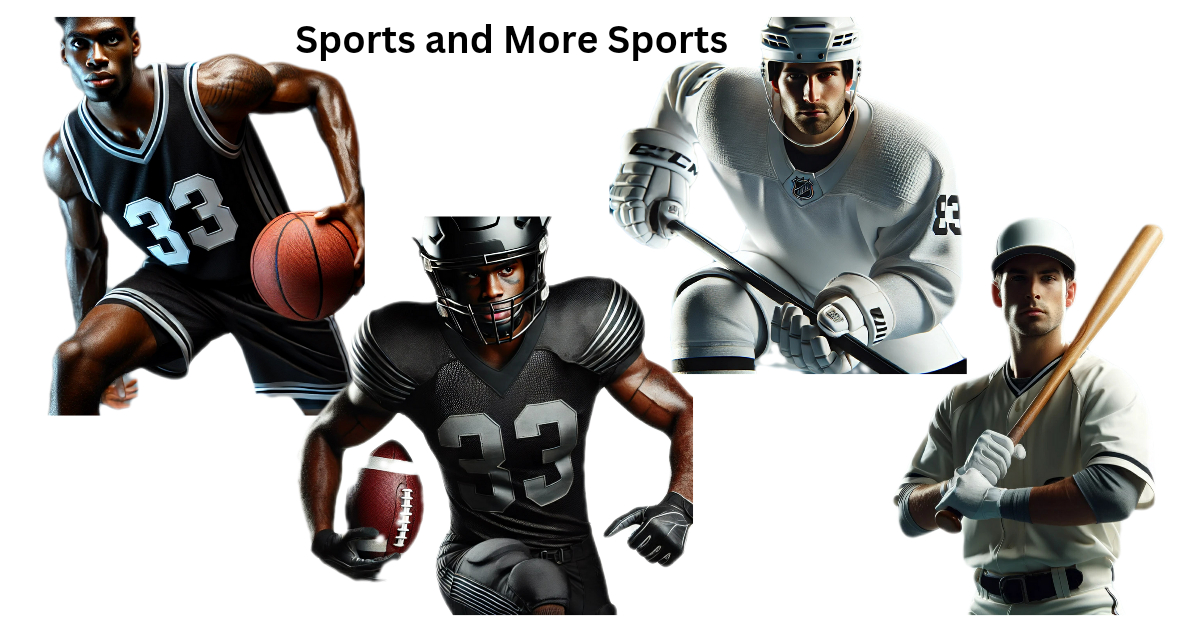Last month, we covered the American League franchises that received the most value from rookies in 2024.
Today, we’ll focus on the senior circuit, which featured five of the top six MLB teams by rookie fWAR. Only the Red Sox (8.8) would rank in the overall top five from the AL teams.
Milwaukee Brewers
The player who led Milwaukee to an MLB-best 12.9 fWAR from rookies this year? Jackson Chourio, of course.
After struggling through April and May with a .210/.254/.327 slash line (61 wRC+) and a 27% strikeout rate, Chourio immediately began to improve at the big league level. He slashed .303/.358/.525 (142 wRC+) with an 18.5 K% from June 1 through the end of the regular season.
The key to Chourio increasing his power output while decreasing his K% was becoming more selective at the plate. Per Statcast, he chased 35.5% of the time in April/May but just 30.4% from then on. Chourio’s zone-swing rate also dropped, so he reeled things in after his initial exposure to big league pitching.
This aligns with a recent league-wide trend of rookies struggling upon their initial callup to the majors. The best ones, such as Chourio, Gunnar Henderson and Bobby Witt Jr., begin to turn things around after the first few months.
Chourio’s adjustments also led to fewer grounders, pulling the ball more and increasing his barrel rate.
To contextualize Chourio’s play over the final four months, note that he had a top-20 wRC+, ahead of all-stars like José Ramírez and Freddie Freeman.
Then there’s Joey Ortiz, one of the critical pieces the Brewers received from the Orioles in last offseason’s Corbin Burnes trade. Ortiz turned 26 in July, so he’s much older than Chourio, but his well-rounded combination of contact ability and defensive skills gave him the fourth-highest fWAR among NL position players.
Offensively, Ortiz’s production arrived on the opposite timeline of Chourio’s. Through May 31, he slashed .288/.388/.504 (147 wRC+) with a nearly identical walk (13.3%) and strikeout (15.1%) rates. Unfortunately, he soon battled a neck injury that he eventually played through, hitting just .216 with lesser plate discipline the rest of the way. Ortiz performed worst against fastballs as a rookie, and it appears as if pitchers began challenging him more frequently as the season went on:
That doesn’t mean he can’t counterattack in 2025, and his aforementioned defensive chops (96th percentile OAA) will keep him involved with a club that prioritizes run prevention.
The last player to highlight from Milwaukee is Tobias Myers, a righthander who registered a 3.00 ERA for one of the top teams in the NL. Similar to Ortiz, Myers is coming off his age-25 campaign. Unlike Ortiz, expectations were even lower for him.
Myers’ fastball comes in just under 93 mph, and he doesn’t have an elite breaking ball by Stuff+. That led to his changeup doing the heavy lifting, as it was his best pitch despite being used only 11.4% of the time.
A changeup-first arm debuting in their mid 20s is a tough bet, especially considering Myers’ ERA estimators (4.19 xERA, 3.91 FIP), which suggest some regression following a solid first year in the majors.
San Diego Padres
Nearly all of San Diego’s offensive rookie fWAR came via Jackson Merrill. His progression throughout 2024 was similar to Chourio’s: two months of struggles before superstardom arrived quickly.
Merrill’s K% increased after June 1, but he spiked his barrel% from 7% to 13.5%.
As seen in the graph above, Merrill’s groundball rate fell meaningfully as he became more comfortable swinging inside the zone.
Suppose there’s a reason to prefer him to Chourio for 2025 fantasy leagues. In that case, Merrill enthusiasts can hang their hat on better batted-ball metrics, led by a material difference in barrel rates.
On the pitching side, Jeremiah Estrada quickly became a revelation for the Padres, finishing in the top 15 among qualified relievers in fWAR and 8th in K-BB%.
Only Mason Miller, Edwin Diaz, and Josh Hader had a higher strikeout rate.
Predictably, Estrada’s Stuff+ grades out very favorably. Only Emmanuel Clase has a better fastball. Estrada used his over 50% of the time in 2024. He also has a plus slider and splitter, each thrown over 20% of the time, giving him a well-rounded, three-pitch mix.
He was a big reason why San Diego’s bullpen ranked fourth in fWAR and second in K-BB% in the second half. Tanner Scott is a free agent, but Estrada will enter 2025 alongside Jason Adam and be counted on as one of the Padres’ top setup arms in front of Robert Suarez.
Washington Nationals
Fueled by elite defense and baserunning, Jacob Young led Washington position players in fWAR. Still, he also recorded a .075 ISO and profiles as more of a role player heading into next season.
The long-term prize here is James Wood, who debuted in July and didn’t turn 22 until mid-September. Despite elite contact-quality metrics like hard-hit rate and average exit velocity, Wood isn’t yet a finished product.That’s primarily because he isn’t yet lifting the ball enough.
Wood didn’t have the PAs to qualify, but if he had, his 55.6% grounder rate would’ve been the second highest in the majors. He scalded the ball as a rookie, but too often, it was hit directly into the dirt.
Wood’s batting eye is impressive, as evidenced by his 22% chase rate per Statcast. However, he ranked in the bottom-11th percentile for “hittable pitches taken.” This means he might be overly passive, which could help explain his putrid rate of pulled fly balls.
Seven of Wood’s nine homers went to the opposite field, so his power plays, but getting the ball in the air more should still be viewed as Wood’s most significant objective entering Year 2. How quickly he accomplishes this will determine his path to stardom.
Dylan Crews received just 132 plate appearances after his August promotion, but he posted strong plate discipline numbers on the surface (20 K%, 8 BB%).
Aside from some average batted ball metrics, there isn’t much else to take away from such a small sample, but it’s worth noting he swiped 12 bases in his 31 games, ranking sixth in the majors during that span.
Like Young, the fWAR totals on the pitching side are (most likely) from future role players. Mitchell Parker made 29 starts while posting a 4.29 ERA, and fellow southpaw DJ Herz struck out 28% of the batters he faced across 19 starts. Neither arm rated well by Stuff+, but Herz’s ERA estimators hint at a higher ceiling heading into next spring.
It’s worth pointing out that both pitchers improved their walk rates in 2024, so maybe there’s something to this organizational ethos after all:
Chicago Cubs
The Cubs’ rookie production was balanced between hitters and pitchers, though nearly all the offensive value came from Pete Crow-Armstrong and Michael Busch.
We’ll start with Crow-Armstrong, the former first round pick out of high school who was dealt to Chicago in exchange for Javy Baez in 2021. The 22-year-old center fielder was a consensus top 20 prospect entering this season, and he put up an 87 wRC+ across 410 PAs.
Crow-Armstrong’s primary value comes from his defense, where he checks in with 99th percentile fielding run value at Baseball Savant. He’s also a plus-base runner and went 27-for-30 in stolen base attempts this year.
Crow-Armstrong’s contact quality metrics are uninspiring, but he managed to swat ten homers and hit fewer grounders in the second half, which featured overall offensive improvement. It remains to be seen how much playing time he receives against lefties in 2025, but this fantasy-friendly skill set is waiting to be fully unlocked.
Then there’s Busch, who finally received an extended look in the majors in his age-26 season. It took a trade away from the Dodgers, but Busch held his own at the plate with a 119 wRC+ and a 76th-percentile barrel rate.
Busch doesn’t have elite raw power, but he aptly combines a keen batting eye with an approach to lift the ball to his pull side. This is best illustrated via his spray chart:
His ultimate ceiling is limited by a lack of base running or fielding value, but Busch profiles like a projectable above-average bat for next summer’s lineup.
Chicago’s rookie pitcher success was, of course, dominated by Shota Imanaga, who went 15-3 with a 2.91 ERA, 1.02 WHIP and 174 strikeouts in 173.1 innings to kick off his stateside career.
After a dominant first two months, Imanaga scuffled in June with a 5.67 ERA, which led many to believe MLB was adjusting to his unique fastball. Things quickly corrected, though, and Imanaga’s season-long splits were very tight on the surface:
He allowed more homers in the second half, but xFIP thinks he might’ve been unlucky. When looking at the entire season, only Tarik Skubal, Chris Sale and Zack Wheeler had ERA/WHIP ratios that were lower than Imanaga’s.
Pittsburgh Pirates
As if this pair of rookie arms hasn’t had enough written about them already, Paul Skenes and Jared Jones are the names to know here.
It’s tempting to look at Skenes’ splits and notice that he performed worse after the All-Star break than he did beforehand.
In the first half (min. 60 IP), he tied Garrett Crochet for the highest K-BB% in MLB. In the second half, he (gasp) ranked eighth! This highlights the importance of “zooming out” when deep-diving individual players, as Skenes still dominated despite slightly worse K/BB numbers.
He allowed fewer homers in the second half, but xFIP thinks he got a little lucky. The only difference in the pitch mix was fewer sinkers and more changeups. Considering Skenes’ “splinker” is one of the most valuable pitches in baseball, this was a curious decision. Perhaps he was testing things out. Again, he was still studly overall.
The only question to ask about Skenes this offseason is whether he should be the first pitcher taken in fantasy leagues or merely top 3.
Jones’ splits, however, were a little more troubling:
Jones posted an unholy 52:5 K/BB through his first seven starts with a 2.63 ERA.
Afterwards? An 80:34 K/BB with a 4.91 ERA.
Jones’ fastball ride fell after April, but after some time off due to injury, it eventually recovered:
However, his velocity never again reached the monthly high he posted in April (97.8 mph).
Zooming out, Jones’ debut year was a resounding success, but he couldn’t maintain the flashes of stardom he initially showed.
If he can perform at that level more consistently or avoid the walk troubles that surfaced in the middle of the summer, he’ll settle in as a high-end SP2 for the 2025 Pirates.
This post was originally published on this site be sure to check out more of their content.

